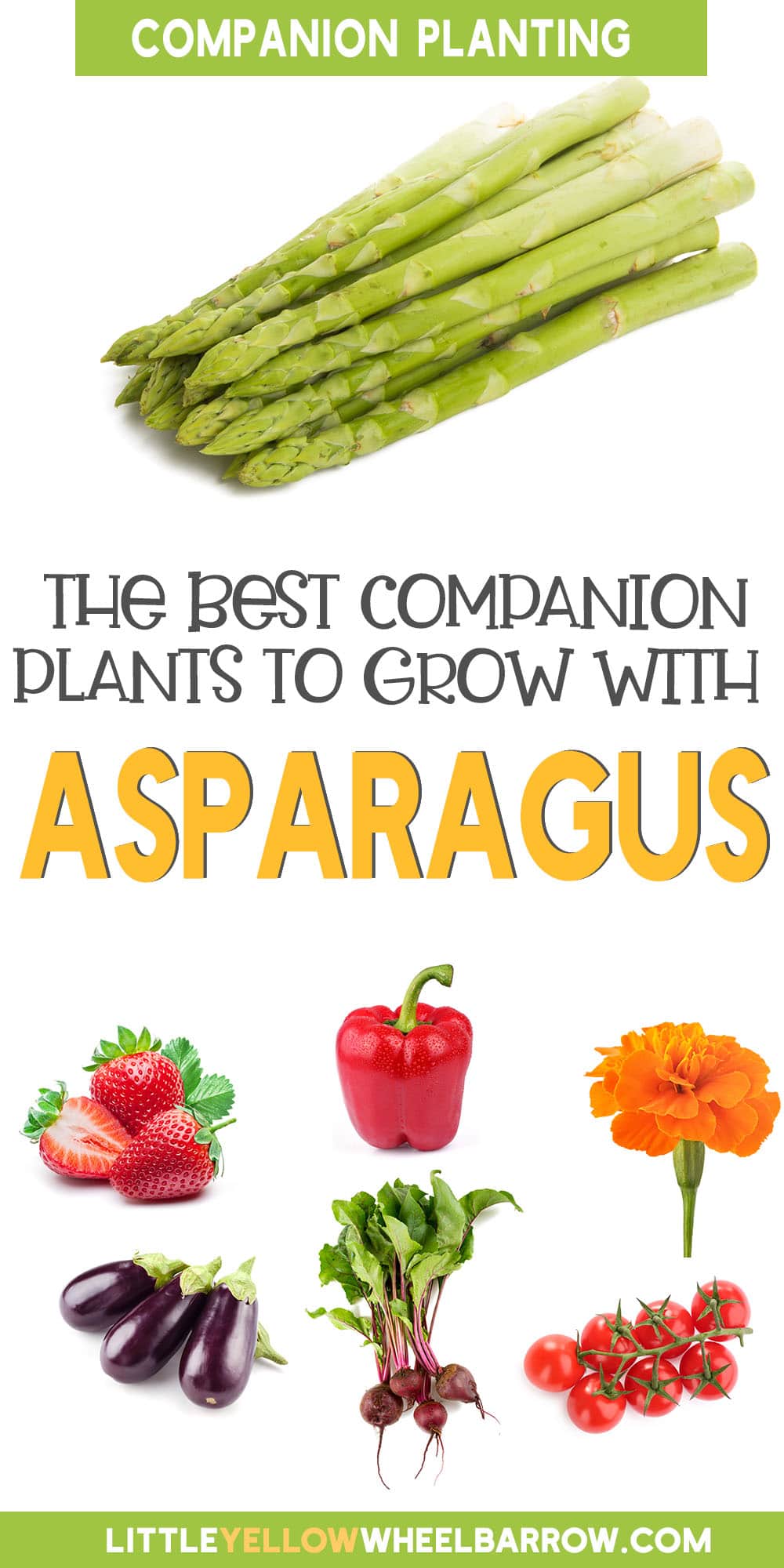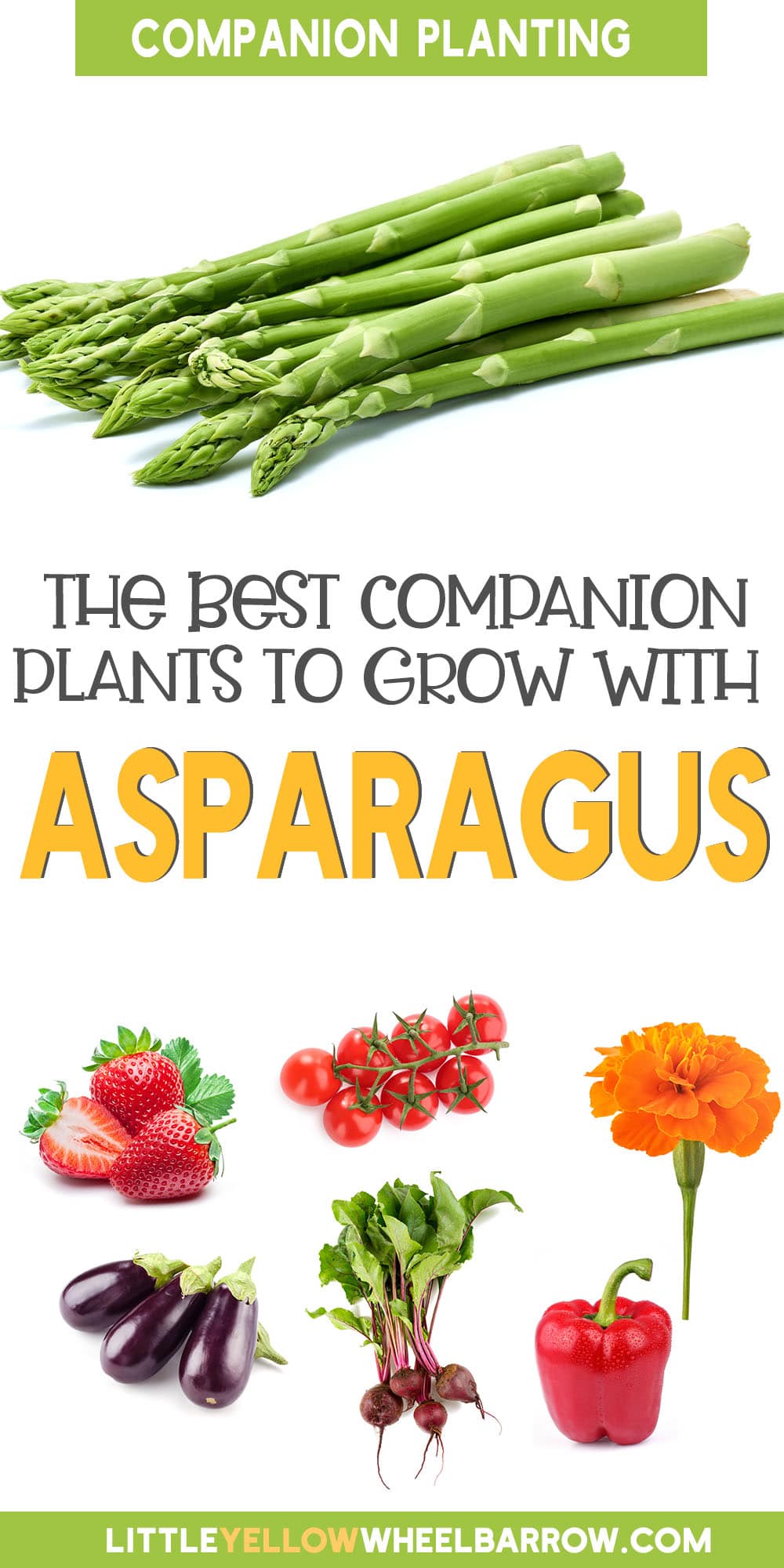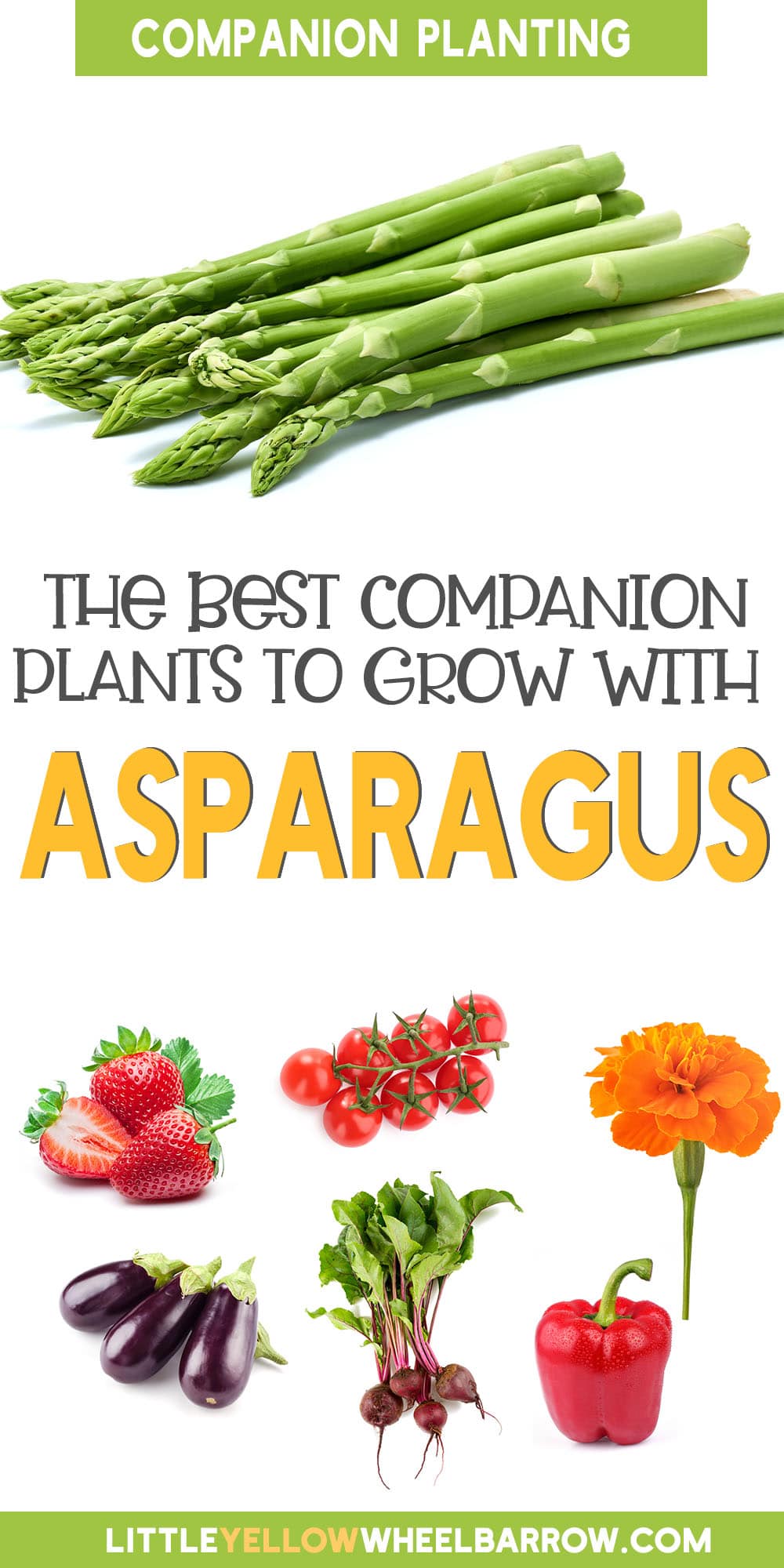The Best Companion Plants For Asparagus Beds
Exploring companion plants for asparagus opens up a world of possibilities to enhance your garden beds. If you’re interested in increasing yields while reducing the use of chemicals, learning about companion planting can make a real difference in your garden’s success. In this guide, we’ll take a look at choosing the right partners for your asparagus, like strawberries and rhubarb, to improve soil quality, deter pests, and add visual interest. By understanding the relationships between asparagus and its companions, you’ll find simple ways to create a balanced and thriving garden environment.

From planting strawberries strategically to pairing asparagus with nightshades, each combination brings its own benefits, helping your garden flourish naturally. By embracing companion planting, you not only nurture a healthy garden but also encourage biodiversity and harmony. Read on to find out why these particular plants make such great companions for asparagus and head to the bottom of the post to find out what plants should never be planted side by side with your asparagus.
Good Companions for Asparagus
The best companion plants for asparagus are plants that do not compete for moisture or nutrition and do not stunt growth or advertise for pests that may damage your asparagus. With this in mind, your best companions are strawberries, rhubarb, nightshades like eggplants, tomatoes, and peppers, and plants that can act like living mulch around the plants like lettuce, beets, and parsley.
Strawberries
Asparagus is one of the best strawberry companion plants you can grow. Plant asparagus at the back of the bed and add the strawberries to the southern side, and both plants will thrive.
Strawberry plants do not grow deep and can be very shallow-rooted plants. Shallow-rooted plants generally do not compete in the same soil level for nutrients or moisture as asparagus. The strawberries will cover and protect the soil from excess moisture loss with their lush green leaf growth.
Strawberries growing inside an asparagus bed is also one of the prettiest combinations, so if you’re going for aesthetics, try those strawberry plants! Moving strawberry plants from an overgrown bed to the asparagus bed is a great way to capitalize on strawberry’s desire to spread.

Eggplants, Peppers, and Tomatoes
Nightshades like eggplants, peppers, and tomatoes all make good companion plants for asparagus.
Nightshades are rich in solanine, known to repel the pesky asparagus beetles that feast on asparagus shoots. Asparagus, in turn, will deter root-knot nematodes, which attack the root systems of nightshades.
Tomato, eggplant, and pepper plants will not compete for space as the plants will be pretty small when the asparagus is harvested. The plants will also not compete for water or nutrients during the growing season.
Important Note:
Although potatoes are considered nightshades, they are the exception and are not good companions for asparagus. See notes under the section for potatoes below.

Beets
Beets also make good companions for asparagus, as they take up very little space and have a shorter growing season. In addition, beets will not compete for water or nutrients with asparagus.
It’s said that beets grown with asparagus will grow larger.
- Learn More: Learn how to grow beets right in containers on your back porch!

Bush Beans
Bush beans will improve the soil where they are grown by adding nitrogen. Asparagus will use that nitrogen to produce healthy, robust spears the following year.
Bush bean plants will not compete with asparagus during the growing season as the harvest spears have already been cut from the garden bed for this year’s harvest.
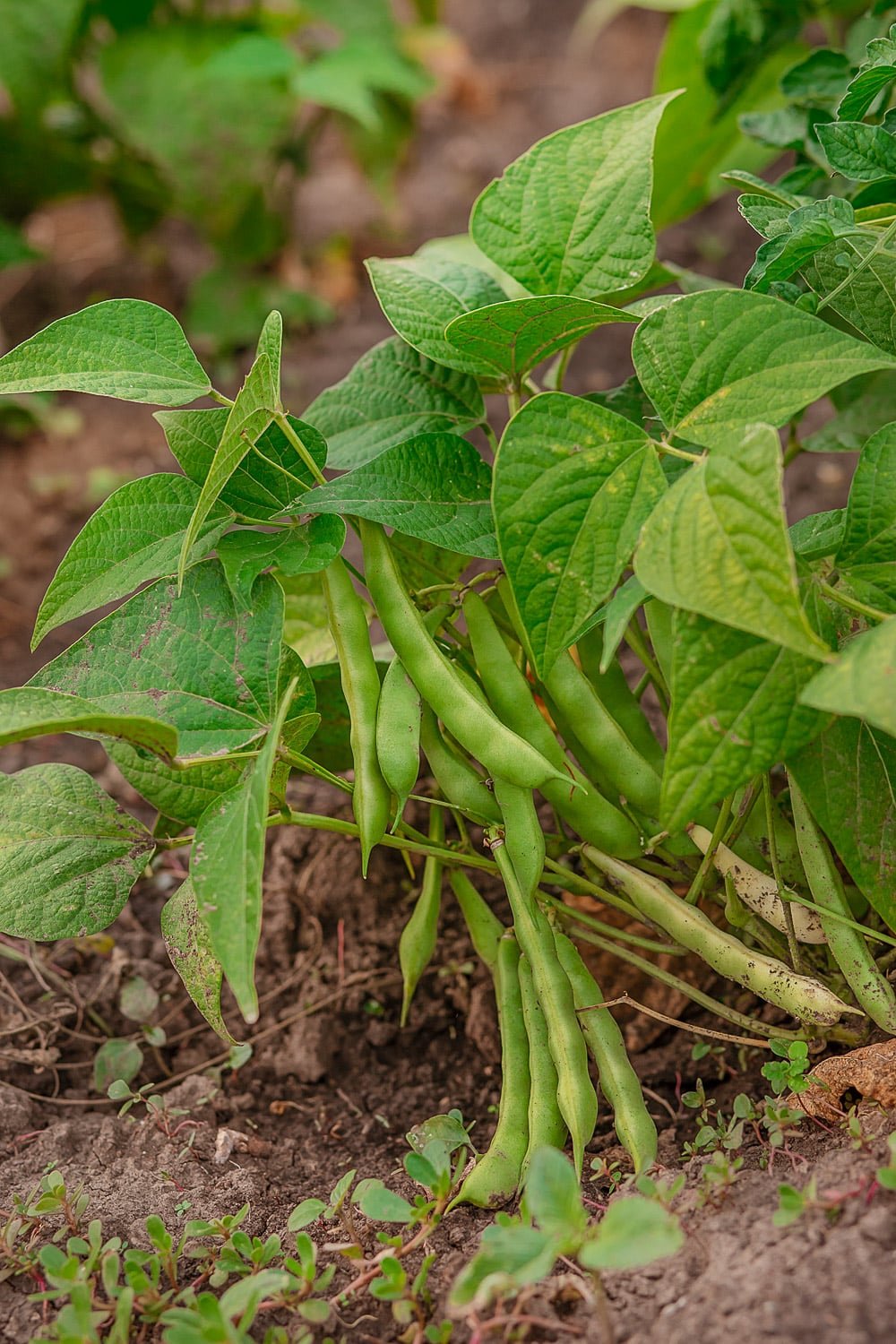
Rhubarb
Rhubarb and asparagus can grow side by side in a garden bed without issue.
The asparagus will help absorb any excess moisture away from the rhubarb plants, which helps prevent root rot. The rhubarb, in turn, will help deter whiteflies and blackfly aphids from the asparagus spears.
- Learn More: See our posts on how to grow rhubarb and how to properly harvest rhubarb.

Horseradish
Horseradish takes minimal nutrients away from the soil and requires a growing spot that is not consistently wet.
Asparagus plants will help absorb any excess moisture, and much like rhubarb, it will help the horseradish avoid rotting roots.

Lettuce
Lettuce makes a great companion plant for asparagus in early spring. You can plant the lettuce between asparagus rows to create a living mulch that will help trap moisture and keep the soil cool.
Asparagus will help provide shade for the lettuce and keep it from bolting as the season warms up.

Parsley
Parsley plants are said to add vigor and help asparagus grow. Much like lettuce, You can plant parsley between the rows to help keep the soil cool and moist.
If allowed to flower, all types of parsley will attract beneficial insects like parasitic wasps, but parsley’s number one claim to fame is its ability to repel the asparagus beetle.

Basil
Basil is an excellent companion plant for asparagus. Like lettuce and parsley, it can act as a living mulch under your asparagus plants.
Basil’s pungent smell also helps confuse and deter asparagus beetles from setting up shop on your asparagus plants.
- Learn More: Basil is so easy to grow! See our guide on how to grow basil, and once you have that bumper crop, come back and see our complete guide on what to do with all that extra basil.

Dill
Dill plants grown between rows will grow tall along with the asparagus spears. In addition, dill will attract beneficial insects like lacewings and ladybugs, which will prey on aphids.

Marigolds, Nasturtiums, and Asters
Marigolds, nasturtiums, and asters are welcome additions to most garden beds and make great asparagus companion plants.
Nasturtiums will help with aphids, while marigolds and asters will attract beneficial insects like hoverflies, parasitic wasps, and spined soldier bugs, which will help decimate any pest pressure on the asparagus.
See our complete guide for the many wonderful uses of marigolds!
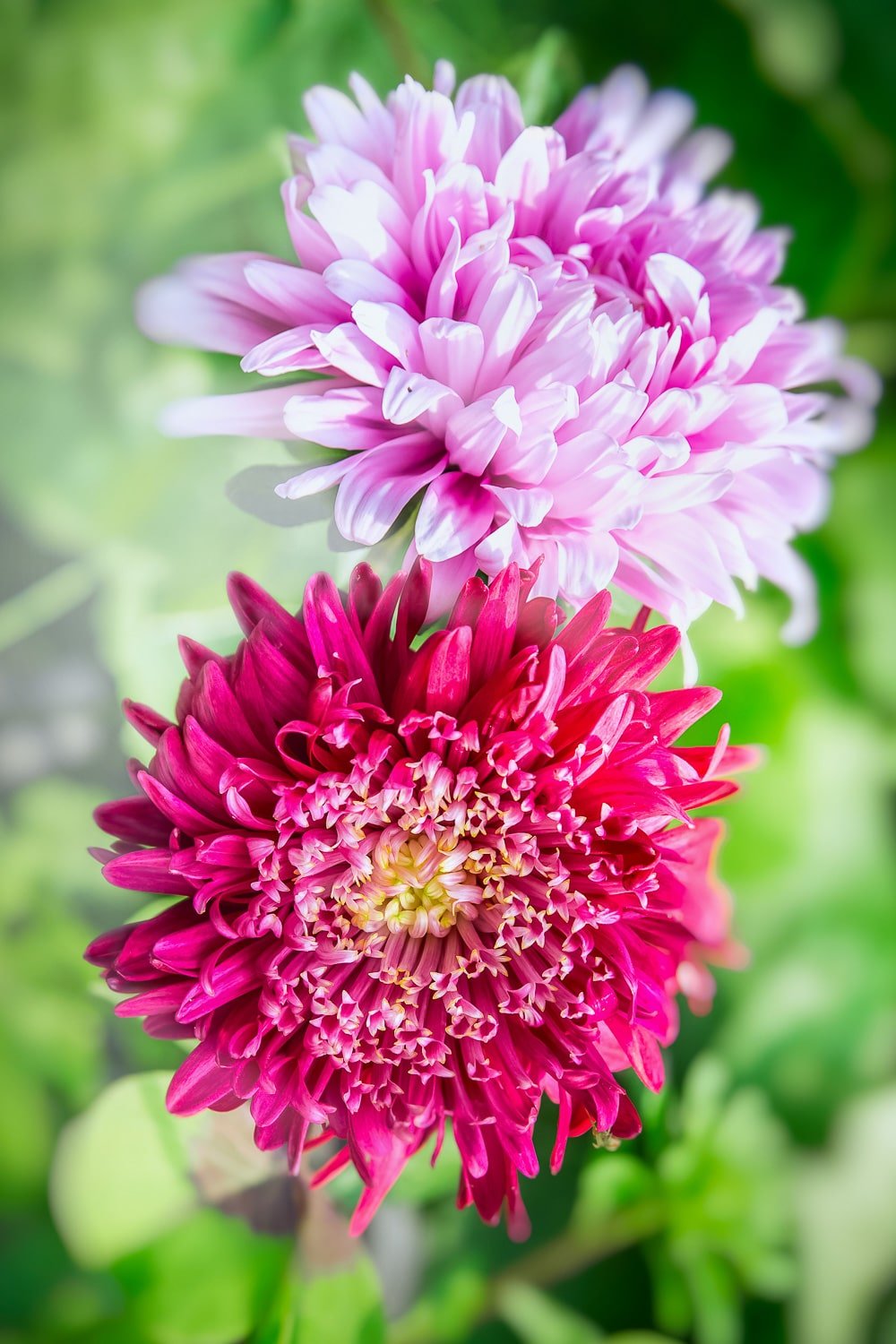
Poor Companion Plants for Asparagus
You will want to keep deep-rooted plants away from your asparagus. Deep-rooted plants will compete for both water and nutrients and stunt the growth of both.
Alliums
Alliums like onions, garlic and shallots make excellent companion plants for many garden fruits and vegetables, but not asparagus. These plants will compete for water and soil nutrients, and both plants will be stunted. Avoid planting alliums anywhere near your asparagus beds.

Expert Tips
- Plan for Succession: Consider the timing of planting companion plants to ensure that they complement the growth stages of asparagus. Plant fast-growing companions early in the season to establish root systems before the asparagus spears emerge, and choose longer-lived companions for continued support throughout the growing season.
- Diversify Companion Selection: Incorporate a diverse range of companion plants to maximize the benefits of biodiversity in your garden. Select plants with different root structures, growth habits, and pest-repelling properties to create a resilient and balanced ecosystem.
- Practice Crop Rotation: Implement crop rotation strategies to prevent the buildup of soil-borne diseases and pests that may affect both asparagus and its companions. Rotate companion plants with different families or characteristics to maintain soil health and optimize yields over time.
- Consider Companion Plant Placement: Strategically position companion plants around the perimeter of the asparagus bed or intersperse them among the asparagus rows to maximize space utilization and minimize competition. Group plants with similar water and nutrient requirements to simplify irrigation and fertilization management.
- Monitor and Manage Pests: Regularly inspect companion plants for signs of pests and diseases to prevent infestations that may spread to the asparagus crop. Implement integrated pest management techniques, such as companion planting, beneficial insect habitats, and natural predators, to minimize pesticide reliance and promote ecological balance.
FAQs
While companion planting can help deter pests and reduce the reliance on pesticides, it may not eliminate the need for pest management entirely. Monitoring for pests and diseases and employing a combination of cultural, mechanical, and biological control methods may still be necessary for optimal crop health.
Yes, many annual flowers can serve as beneficial companions for asparagus by attracting pollinators, repelling pests, and adding aesthetic appeal to the garden. Marigolds, nasturtiums, and calendula are popular choices for companion planting with vegetables like asparagus.
Yes, some plants can negatively impact the growth and health of asparagus. Avoid planting deep-rooted crops like potatoes near asparagus beds, as they can compete for nutrients and space, hindering asparagus growth.
Final Remarks
Companion planting offers practical solutions to enhance your asparagus beds and nurture a healthier garden. By selecting compatible companions such as strawberries, rhubarb, and nightshades, you can improve soil quality, deter pests, and foster biodiversity in your garden. With careful planning and attention to detail, companion planting becomes a simple yet effective strategy for cultivating thriving gardens where asparagus and its companions thrive together.
Join The Conversation
Share your companion planting experiences with asparagus in the comment section below! Whether you’re a seasoned gardener or just starting out, your insights and questions help us build a vibrant community. Let’s swap tips, stories, and celebrate the joys of gardening together!
Related Posts

Author: Laura Kennedy
Writer & Owner of Little Yellow Wheelbarrow
Editor’s Note: This post was originally published on January 5, 2023. It was updated on March 1, 2024 for clarity and to add a table of contents, expert tips, and FAQs.

